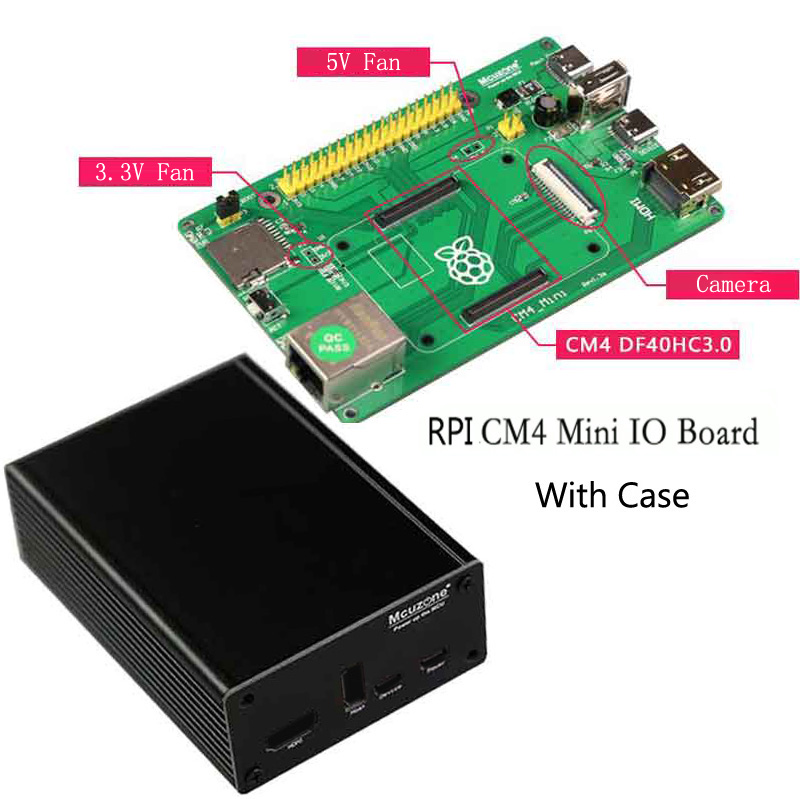- sales/support
Google Chat: zj734465502@gmail.com
- sales
+86-0755-88291180
- sales01
sales@spotpear.com
- sales02
dragon_manager@163.com
- support
tech-support@spotpear.com
- CEO-Complaints
zhoujie@spotpear.com
- sales/support
WhatsApp:13246739196
Setting up Jetson nano to boot the system from a USB Flash Disk
Introduction
Herein mainly introduces Jetson Nano modules with 16GB eMMC memory according to official nvidia tutorial. All information is subject to the official website of nvidia.
Reference Links
- https://developer.nvidia.com/embedded/learn/get-started-jetson-nano-devkit#write
- https://docs.nvidia.com/jetson/archives/l4t-archived/l4t-3261/index.html#page/Tegra%20Linux%20Driver%20Package%20Development%20Guide/flashing.html#wwpID0E01O0HA
Hardware Preparation
- Jetson Nano module, corresponding power supply and heatsink
- Ubuntu18.04 computer host
- U disk with USB interface or mobile hard disk (USB3,0 is recommended)
- a USB data cable (Micro USB interface, for transmitting data)
Software Preparation
- Install SDK Manager and flash system configuration for Jetson Nano.
- Tutorial: SDKM flash Nano
- Record the address of the downloaded HW Imager during the flashing process for later.

- Connect the U disk to the nano, and check the device number of it in the nano, such as sda.
ls /dev/sd*
- Insert the U disk to the ubuntu computer.
- Check the device number of the U disk on the computer, such as sdb.
sudo lsblk -p -d | grep sd
- Note: If your U disk has been partitioned before, it is recommended to format and adjust it to a partition on another computer first.
- Format the USB drive to ext4
sudo mkfs.ext4 /dev/sdb
- Note: Please refer to your actual situation for the specific device number. Some devices may be sda or others.
- Mount U disk
sudo mount /dev/sdb /mnt
- Enter the HW Imager address and copy the rootfs.
cd <path>/Linux_for_Tegra/rootfs/
- Note: Please refer to your actual address. For example, the author's path command:
cd/home/ubuntu/nvidia/nvidia_sdk/JetPack_4.6.1_Linux_JETSON_Nano_TARGETS/Linux_for_Tegra/rootfs/
- Copy the file system to the U disk.
sudo tar -cpf - * | ( cd /mnt/ ; sudo tar -xpf - )
- After finishing the copy, unmount the U disk, (note: don't pull it out).
sudo umount /mnt
- Set up nano as recovery mode (refer to the flashing tutorial), then connect it to the ubuntu computer and input the flashing command.
cd ../ csudo ./falsh.sh jetson-nano-emmc sda
- Note: Sda should be filled in as the actual device number of the U disk recognized by nano in the first step.
- After flashing, disconnect the nano and the U disk. Insert the U disk to the Nano before powering on it, and follow the prompts to complete the configuration.
TAG:
PC U
Raspberry Pi 5 PCIe to 4-CH M.2 NVMe 4-Ports SSD Board HAT Pi5 Four-Times
Industrial USB TO 8CH TTL Converter USB to UART Multi Protection Circuits Multi Systems
Raspberry Pi
ESP32-S3N8R8 7inch LCD Display TouchScreen 800&amp;amp;amp;amp;amp;amp;amp;amp;times;480 WiFi Bluetooth CAN RS485 Sensor
Servo
MLX90641
Raspberry Pi RTC WatchDog HAT (B)
3D Display
RS485 TO ETH (B) Connect Alibaba Cloud And EMQX
Raspberry Pi 5 LIR2032
15.6 inch Dual LCD Computer PC Monitor Display Double Secondary Screen Type C Mini HDMI 1080P For Windows/MacOS
ESP32 S3 2.1 inch Round LCD Development Board 480x480 TouchScreen Display LVGL HMI With QMI8658C 6-Axis Sensor
spotpear
Raspberry Pi 5 PCIe To M.2 E KEY NGFF WIFI7 WIFI6 For BE200/AX210/AX200/RTL8822CE
Jetson Orin 5G/4G/3G expansion board GNSS GPS RM520N-GL
Raspberry Pi Pico 2 RP2350 1.64 inch AMOLED Development Board Display TouchScreen 280x456 QMI8658 IMU QSPI
VGA to LVDS
Raspberry Pi 5 DSI display
USB camera 5MP IMX335 No Distortion
TAG:
5.79inch e Paper Module Black-White display 792x272 Arduino Raspberry Pi Jetson STM32
TOF Time-Of-Flight Laser Range Radar
Raspberry Pi Zero Pi0 2W Digital Photo Frame 7.3 inch E6 Full Color E Paper Ink Calendar Art Poster
ESP32-S3FN8
4 inch e Paper HAT+ E Ink Spectra E6 Full-Color 600x400 Screen Display Arduino Raspberry Pi Jetson Nano STM32
Raspberry Pi Pico W
M12 High Resolution Lens 12MP 8mm Raspberry Pi High Quality Camera M12
RP2040
CPU
HDMI to TTL
i7-1165G7
Milk-V Duo BUY
Raspberry Pi 5 PCIe USB UART HAT RS485 ISO TTL RS232 MPUUART
Raspberry Pi RP2040
Raspberry Pi 5 Red-White Case official Active Cooler
ESP32 S3 LCD Development Board 1.3 inch Display
ESP32 S3 LCD 1.3 inch Holographic Display Screen 3D Transparent Refractive Prism Mini TV
Raspberry Pi 5 8 inch DSI LCD Captive TouchScreen MIPI Display 1280x800
LuckFox
ESP32-S3 1.28inch Round LCD




